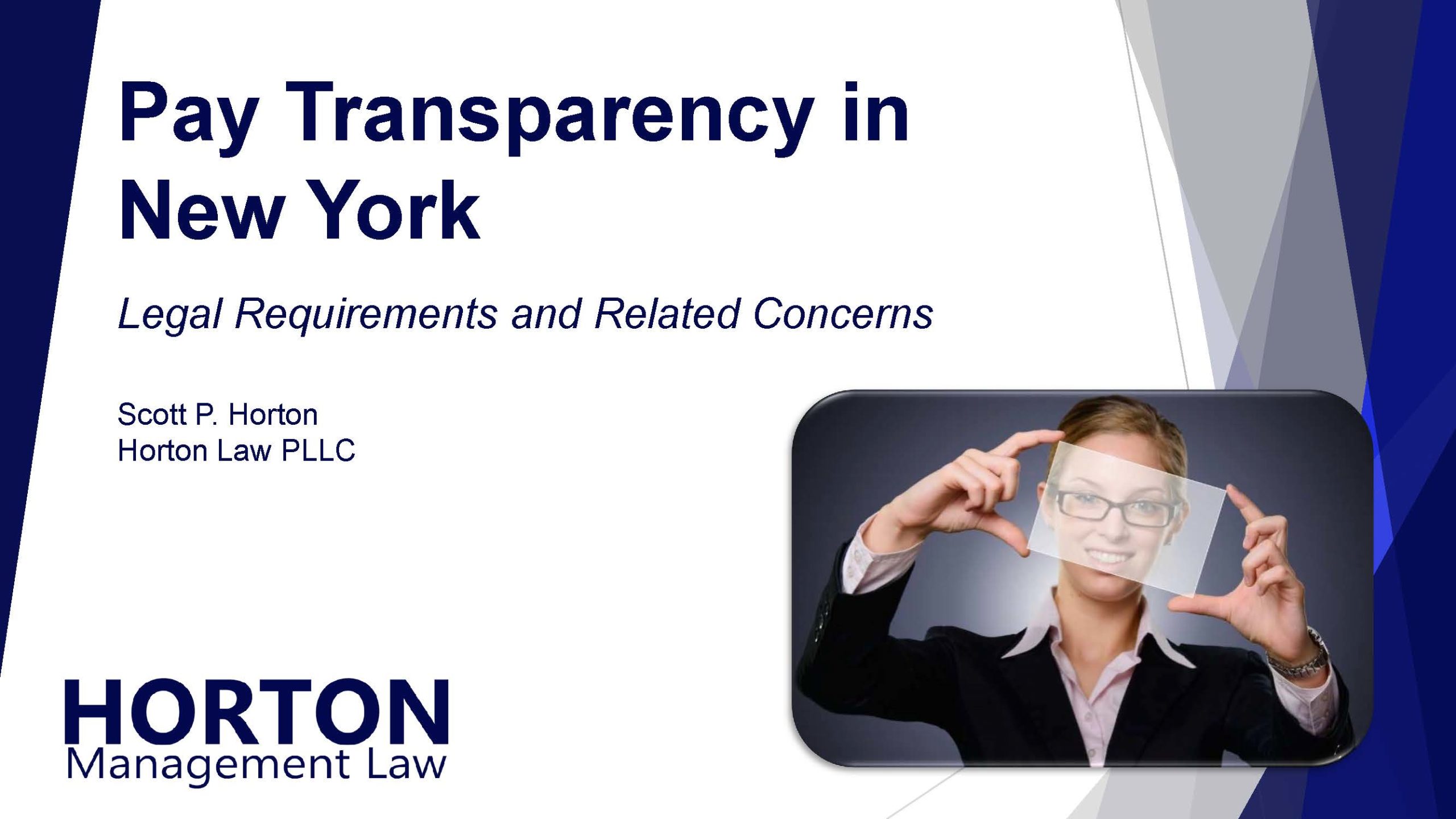On May 26, 2022, I presented a complimentary webinar entitled “Pay Transparency in New York”. For those who couldn’t attend the live webinar, I’m happy to make it available for you to watch at your convenience.
In the webinar, I discuss:
- Federal & State Laws
- New York City Salary Disclosures
- Multi-Jurisdictional Positions
- Practical Considerations
and much more!
Beginning November 1, 2022, employers posting for jobs that could be performed in New York City must include a salary/wage range for the positions. Proposed legislation would impose similar or even greater requirements throughout New York State.
This webinar addresses some of the practical considerations and consequences of including pay information in job advertisements in addition to describing the obligations imposed by law.
Why You Should Watch “Pay Transparency in New York”
Employers with positions available in New York must be aware of the new legal requirements taking effect in November 2022. But perhaps even before then, New York State may enact broader obligations regarding compensation and benefit information in job postings.
Under current and proposed laws, employers have choices. These include whether to post for jobs in the first place and how large of a pay range to include when they do. What is a “good faith” compensation range? How will you decide compensation in the face of these new obligations? How will they affect overall labor costs?
Plus, learn how these laws could affect unionization efforts and wage negotiations. And hear what you might want to do now to best position your organization for compliance and to avoid allegations of pay inequity.
Don’t Miss Our Future Webinars!
Click here to sign up for the Horton Law email newsletter to be among the first to know when registration is open for upcoming programs! And follow us on LinkedIn for even more frequent updates on important employment law issues.


